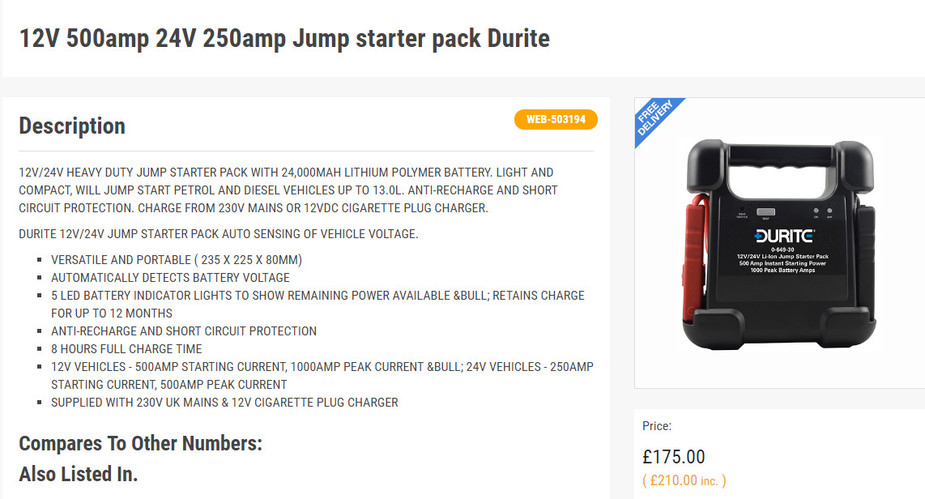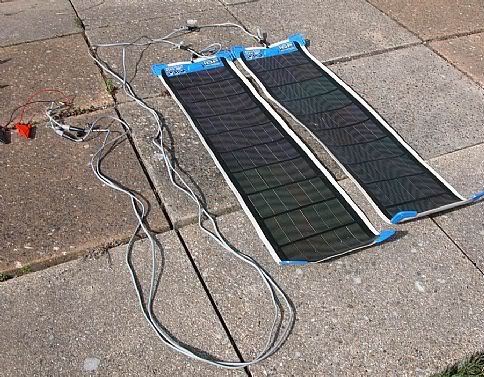Is anyone using something like this

Either to fly with or just in the hangar?
The lead acid ones are way too heavy to fly with. The lithium ones seem to weigh a few kg at most.
I got an old one like that, only it has NoCd batteries. When I need it (every third year or something) it is always flat because it has stayed unused too long. To charge it takes about the same amount of time as to charge the car batteries. Litium is better than NiCd in that respect, but still. It’s a good idea, and I guess some people have use for it, but as a general thing, it’s usefulness is very limited.
Peter wrote:
Either to fly with or just in the hangar?
Definitely cheaper to buy than a 500A ground power unit. But carrying that on board an aeroplane? No way as far as I am concerned. We are not even supposed to carry those LiPo power banks on our (commercial) flights – and for a good reason. If this thing would be approved for aircraft no problem – but it will cost ten times as much then.
Last year I came across a very interesting design of a starting booster – nothing more than an EDLC (I mean a supercapacitor, not the aerofrome in Germany  ). The idea is quite elegant: when the lead-acid battery can no longer crank the starter, it’s not because it has no charge left or the voltage is too low, it’s only because it does not yield enough current. So, you connect a supercapacitor in parallel with the battery, and it will charge to the battery voltage even at low current; now, when you close the starter relay, it gives you a few seconds’ worth of full starting current! Apparently, these units are becoming especially popular in HGVs, where they are often installed permanently.
). The idea is quite elegant: when the lead-acid battery can no longer crank the starter, it’s not because it has no charge left or the voltage is too low, it’s only because it does not yield enough current. So, you connect a supercapacitor in parallel with the battery, and it will charge to the battery voltage even at low current; now, when you close the starter relay, it gives you a few seconds’ worth of full starting current! Apparently, these units are becoming especially popular in HGVs, where they are often installed permanently.
Would that be a way to use lower capacity batteries and save some weight?
Supercaps normally have a high output impedance i.e. can’t deliver much current.
But LIPOs, as e.g. used in model planes, can deliver hundreds of amps from a tiny ~13V battery e.g. 3 × 15 × 2 cm. One could partially charge such a battery from a “flat” (i.e. say a 24V battery discharged to 10V) aircraft battery and then use it to start the engine.
Another approach is to carry a roll-up solar panel 

I bought one in 2004 for my trips to Greece. It delivers 1-2A into a 24V battery so after a few hours there would be enough to start the engine. It can also power a 24V soldering iron 
Would that be a way to use lower capacity batteries and save some weight?
You need the battery in case of an alternator failure too.
Peter wrote:
Supercaps normally have a high output impedance i.e. can’t deliver much current.
There are videos on YouTube of supercapacitors being used to melt 6 inch steel nails, so at least some of them can deliver enormous currents.
Peter wrote:
Supercaps normally have a high output impedance i.e. can’t deliver much current
Maxwell’s 2.7V biggest version can spit 1900A out of a Coke can – sized ultra. Whether replacing batteries with UC’s in aircraft would yield a weight reduction remains to be seen. In high-power applications (truck engines) a UC start pack now replaces three out of four batteries.
With an aircraft engine where you need to do a voodoo hand dance to get the throttle, mixture, boost and whatnot just right depending on temperature, the UC would probably run out of juice before the engine starts…
Does anyone make a portable starting product which uses the supercaps?